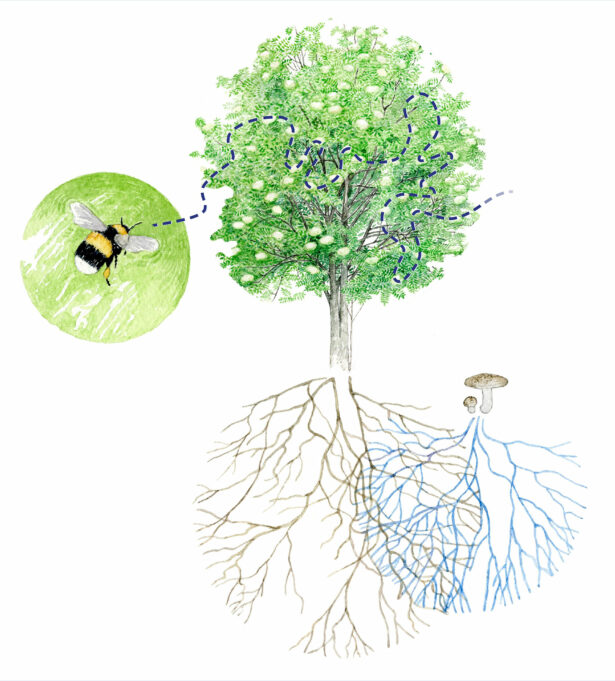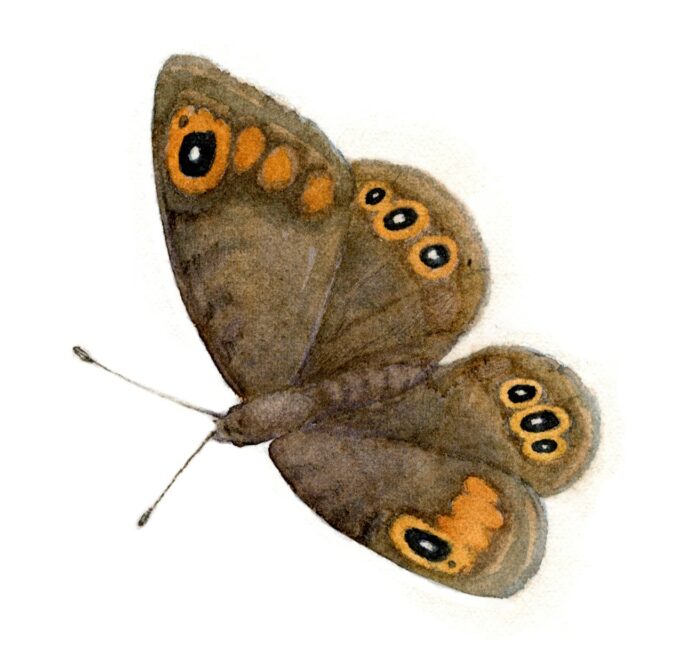The Power of Cooperation
Partnership species in forests are nature’s own network of cooperation, where different organisms have formed relationships with each other. These relationships are not accidental, but necessary for the survival and success of the species. By joining forces, networks support forest biodiversity and health, which are an essential part of the balance of nature.

One of the best-known pairs of partnership species is fungi and trees. It is said that without mushrooms, we would have no forests as a tree needs a fungal partner to grow. Together, they form a mycorrhizal symbiosis, where the fungal rhizomes are fused to the tree and its root system. This relationship is mutually beneficial: the fungi get carbohydrates from the tree’s root system and the tree gets nutrients and water from the fungi.
Pollinators and flowering plants are another important partnership species in forests. Bees, butterflies and other pollinators collect nectar and pollen from flowers, pollinating them at the same time. This partnership not only supports plant reproduction, but is also an essential part of food production for humans, as many crops need pollinators.
Partnership species are not limited only to plants and animals. Microbes, such as bacteria, also form important relationships with different plants. They break down dead organic matter, release nutrients into the soil and help maintain forest health.
By understanding the importance of partnership species, we can protect and maintain the diversity and sustainability of our forests for future generations.

Updated 7.2.2024